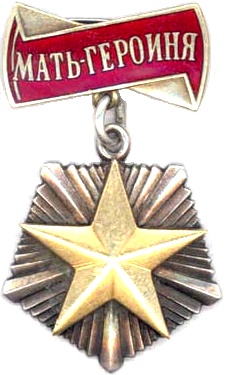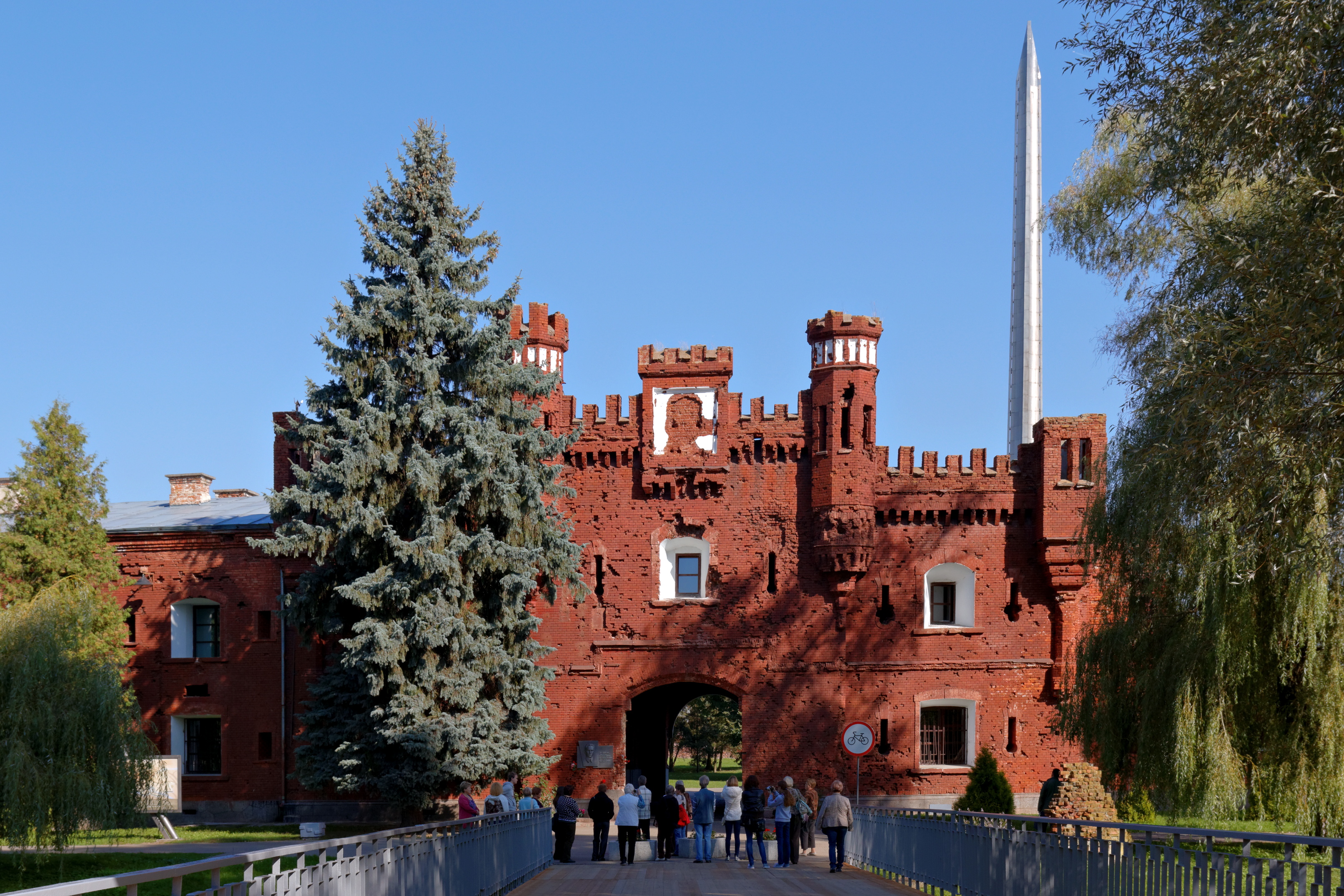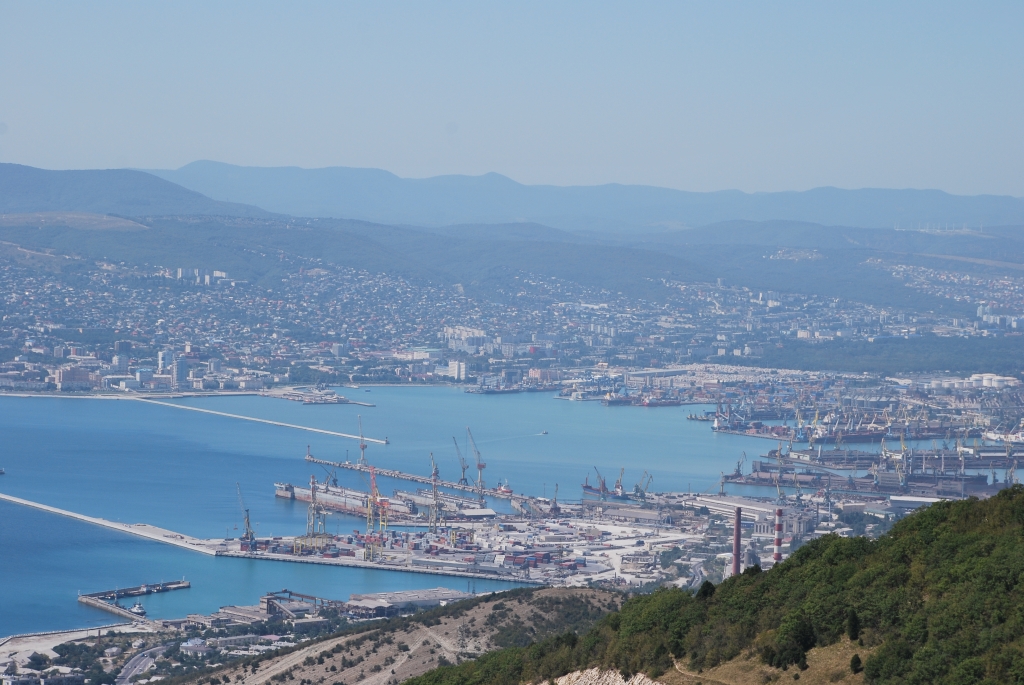|
Hero (title)
The title of Hero is presented by various governments in recognition of acts of self-sacrifice to the state, and great achievements in combat or labor. It is originally a Soviet-type honor, and is continued by several nations including Belarus, Russia, and Ukraine. It was also awarded to cities and fortresses for collective efforts in heroic feats. Each hero receives a medal for public display, special privileges and rights for life, and the admiration and respect of the nation. Some countries without Soviet connections also award Hero honours. Soviet titles Hero of the Soviet Union The first hero title established, " Hero of the Soviet Union", was created by decree of the Presidium of the Supreme Soviet of the USSR on 16 April 1934. The identifying badge, the "Gold Star Medal", was not created until 1 August 1939. The title was awarded for ''"personal or collective deeds of heroism rendered to the USSR or socialist society"'' and it was awarded to both military personnel a ... [...More Info...] [...Related Items...] OR: [Wikipedia] [Google] [Baidu] |
Soviet Union
The Soviet Union,. officially the Union of Soviet Socialist Republics. (USSR),. was a transcontinental country that spanned much of Eurasia from 1922 to 1991. A flagship communist state, it was nominally a federal union of fifteen national republics; in practice, both its government and its economy were highly centralized until its final years. It was a one-party state governed by the Communist Party of the Soviet Union, with the city of Moscow serving as its capital as well as that of its largest and most populous republic: the Russian SFSR. Other major cities included Leningrad (Russian SFSR), Kiev (Ukrainian SSR), Minsk ( Byelorussian SSR), Tashkent (Uzbek SSR), Alma-Ata (Kazakh SSR), and Novosibirsk (Russian SFSR). It was the largest country in the world, covering over and spanning eleven time zones. The country's roots lay in the October Revolution of 1917, when the Bolsheviks, under the leadership of Vladimir Lenin, overthrew the Russian Provisional Government ... [...More Info...] [...Related Items...] OR: [Wikipedia] [Google] [Baidu] |
Moscow
Moscow ( , US chiefly ; rus, links=no, Москва, r=Moskva, p=mɐskˈva, a=Москва.ogg) is the capital and largest city of Russia. The city stands on the Moskva River in Central Russia, with a population estimated at 13.0 million residents within the city limits, over 17 million residents in the urban area, and over 21.5 million residents in the metropolitan area. The city covers an area of , while the urban area covers , and the metropolitan area covers over . Moscow is among the world's largest cities; being the most populous city entirely in Europe, the largest urban and metropolitan area in Europe, and the largest city by land area on the European continent. First documented in 1147, Moscow grew to become a prosperous and powerful city that served as the capital of the Grand Duchy that bears its name. When the Grand Duchy of Moscow evolved into the Tsardom of Russia, Moscow remained the political and economic center for most of the Tsardom's history. When th ... [...More Info...] [...Related Items...] OR: [Wikipedia] [Google] [Baidu] |
Eastern Bloc
The Eastern Bloc, also known as the Communist Bloc and the Soviet Bloc, was the group of socialist states of Central and Eastern Europe, East Asia, Southeast Asia, Africa, and Latin America under the influence of the Soviet Union that existed during the Cold War (1947–1991). These states followed the ideology of Marxism–Leninism, in opposition to the Capitalism, capitalist Western Bloc. The Eastern Bloc was often called the Second World, whereas the term "First World" referred to the Western Bloc and "Third World" referred to the Non-Aligned Movement, non-aligned countries that were mainly in Africa, Asia, and Latin America but notably also included former Tito–Stalin split, pre-1948 Soviet ally SFR Yugoslavia, which was located in Europe. In Western Europe, the term Eastern Bloc generally referred to the USSR and Central and Eastern European countries in the Comecon (East Germany, Polish People's Republic, Poland, Czechoslovak Socialist Republic, Czechoslovakia, Hungarian ... [...More Info...] [...Related Items...] OR: [Wikipedia] [Google] [Baidu] |
Warsaw Pact
The Warsaw Pact (WP) or Treaty of Warsaw, formally the Treaty of Friendship, Cooperation and Mutual Assistance, was a collective defense treaty signed in Warsaw, Poland, between the Soviet Union and seven other Eastern Bloc socialist republics of Central and Eastern Europe in May 1955, during the Cold War. The term "Warsaw Pact" commonly refers to both the treaty itself and its resultant defensive alliance, the Warsaw Treaty Organization (WTO). The Warsaw Pact was the military complement to the Council for Mutual Economic Assistance (Comecon), the regional economic organization for the socialist states of Central and Eastern Europe. The Warsaw Pact was created in reaction to the integration of West Germany into the North Atlantic Treaty Organization (NATO)"In reaction to West Germany's NATO accession, the Soviet Union and its Eastern European client states formed the Warsaw Pact in 1955." Citation from: in 1955 as per the London and Paris Conferences of 1954.The Warsaw Pact R ... [...More Info...] [...Related Items...] OR: [Wikipedia] [Google] [Baidu] |
Communist
Communism (from Latin la, communis, lit=common, universal, label=none) is a far-left sociopolitical, philosophical, and economic ideology and current within the socialist movement whose goal is the establishment of a communist society, a socioeconomic order centered around common ownership of the means of production, distribution, and exchange which allocates products to everyone in the society.: "One widespread distinction was that socialism socialised production only while communism socialised production and consumption." Communist society also involves the absence of private property, social classes, money, and the state. Communists often seek a voluntary state of self-governance, but disagree on the means to this end. This reflects a distinction between a more libertarian approach of communization, revolutionary spontaneity, and workers' self-management, and a more vanguardist or communist party-driven approach through the development of a constitutional socialist state ... [...More Info...] [...Related Items...] OR: [Wikipedia] [Google] [Baidu] |
Perestroika
''Perestroika'' (; russian: links=no, перестройка, p=pʲɪrʲɪˈstrojkə, a=ru-perestroika.ogg) was a political movement for reform within the Communist Party of the Soviet Union (CPSU) during the late 1980s widely associated with CPSU general secretary Mikhail Gorbachev and his glasnost (meaning "openness") policy reform. The literal meaning of perestroika is "reconstruction", referring to the restructuring of the Soviet political and economic system, in an attempt to end the Era of Stagnation. Perestroika allowed more independent actions from various ministries and introduced many market-like reforms. The alleged goal of perestroika, however, was not to end the command economy but rather to make socialism work more efficiently to better meet the needs of Soviet citizens by adopting elements of liberal economics. The process of implementing perestroika added to existing shortages, and created political, social, and economic tensions within the Soviet Union. Fu ... [...More Info...] [...Related Items...] OR: [Wikipedia] [Google] [Baidu] |
Coat Of Arms
A coat of arms is a heraldry, heraldic communication design, visual design on an escutcheon (heraldry), escutcheon (i.e., shield), surcoat, or tabard (the latter two being outer garments). The coat of arms on an escutcheon forms the central element of the full achievement (heraldry), heraldic achievement, which in its whole consists of a shield, supporters, a crest (heraldry), crest, and a motto. A coat of arms is traditionally unique to an individual person, family, state, organization, school or corporation. The term itself of 'coat of arms' describing in modern times just the heraldic design, originates from the description of the entire medieval chainmail 'surcoat' garment used in combat or preparation for the latter. Roll of arms, Rolls of arms are collections of many coats of arms, and since the early Modern Age centuries, they have been a source of information for public showing and tracing the membership of a nobility, noble family, and therefore its genealogy across tim ... [...More Info...] [...Related Items...] OR: [Wikipedia] [Google] [Baidu] |
Brest Fortress
Brest Fortress ( be, Брэсцкая крэпасць, '; pl, Twierdza brzeska, russian: Брестская крепость), formerly known as Brest-Litoŭsk Fortress, is a 19th-century fortress in Brest, Belarus. In 1965, the title "Hero Fortress" was given to the fortress to commemorate the defence of the frontier stronghold during the first week of the Operation Barbarossa when Axis forces invaded the Soviet Union on June 22, 1941. The title "Hero Fortress" corresponds to the title " Hero City" that the Presidium of the Supreme Soviet of the Soviet Union awarded to twelve Soviet cities. Description The Brest fortress has sustained its original outline of a star shaped fortification since its construction in the early 19th century. The Citadel, the core of the fortress, was on the central island formed by the Bug River and the two branches of the Mukhavets River. The island was skirted by a ring of a two-storied barrack with 4 semi-towers. The 1.8 km long b ... [...More Info...] [...Related Items...] OR: [Wikipedia] [Google] [Baidu] |
Novorossiysk
Novorossiysk ( rus, Новоросси́йск, p=nəvərɐˈsʲijsk; ady, ЦIэмэз, translit=Chəməz, p=t͡sʼɜmɜz) is a city in Krasnodar Krai, Russia. It is one of the largest ports on the Black Sea. It is one of the few cities honored with the title of the Hero City. Population: History In antiquity, the shores of the Tsemes Bay were the site of Bata ( el, Μπάτα), an ancient Greek colony that specialized in the grain trade. It is mentioned in the works of Strabo and Ptolemy, among others. Following brief periods of Roman and Khazar control, from the 9th century onwards, the area was part of the Byzantine θέμα Χερσῶνος ''Thema Khersonos'' (Province of Cherson). During the 11th century, the area was overrun and controlled by nomads from the Eurasian steppe, led by the Cumans. Later that century, the Byzantine emperor Ἀλέξιος Κομνηνός Alexios I Komnenos ( r. 1081–1118) was approached by Anglo-Saxon refugees, who had left En ... [...More Info...] [...Related Items...] OR: [Wikipedia] [Google] [Baidu] |
Stalingrad
Volgograd ( rus, Волгогра́д, a=ru-Volgograd.ogg, p=vəɫɡɐˈɡrat), geographical renaming, formerly Tsaritsyn (russian: Цари́цын, Tsarítsyn, label=none; ) (1589–1925), and Stalingrad (russian: Сталингра́д, Stalingrád, label=none; ) (1925–1961), is the largest city and the administrative centre of Volgograd Oblast, Russia. The city lies on the western bank of the Volga, covering an area of , with a population of slightly over 1 million residents. Volgograd is the List of cities and towns in Russia by population, sixteenth-largest city by population size in Russia, the second-largest city of the Southern Federal District, and the Volga#Biggest cities on the shores of the Volga, fourth-largest city on the Volga. The city was founded as the fortress of ''Tsaritsyn'' in 1589. By the nineteenth century, Tsaritsyn had become an important river-port and commercial centre, leading to its population to grow rapidly. In November 1917, at the start of th ... [...More Info...] [...Related Items...] OR: [Wikipedia] [Google] [Baidu] |
Murmansk
Murmansk (Russian: ''Мурманск'' lit. "Norwegian coast"; Finnish: ''Murmansk'', sometimes ''Muurmanski'', previously ''Muurmanni''; Norwegian: ''Norskekysten;'' Northern Sámi: ''Murmánska;'' Kildin Sámi: ''Мурман ланнҍ'') is a port city and the administrative center of Murmansk Oblast in the far northwest part of Russia. It sits on both slopes and banks of a modest ria or fjord, Kola Bay, an estuarine inlet of the Barents Sea. Its bulk is on the east bank of the inlet. It is in the north of the rounded Kola Peninsula which covers most of the oblast. The city is from the border with Norway and from the Finnish border. The city is named for the Murman Coast, which is in turn derived from an archaic term in Russian for "Norwegian". Benefiting from the North Atlantic Current, Murmansk resembles cities of its size across western Russia, with highway and railway access to the rest of Europe, and the northernmost trolleybus system on Earth. It lies over 2° n ... [...More Info...] [...Related Items...] OR: [Wikipedia] [Google] [Baidu] |
Kerch
Kerch ( uk, Керч; russian: Керчь, ; Old East Slavic: Кърчевъ; Ancient Greek: , ''Pantikápaion''; Medieval Greek: ''Bosporos''; crh, , ; tr, Kerç) is a city of regional significance on the Kerch Peninsula in the east of the Crimea, Ukraine. Kerch has a population of about Founded 2,600 years ago as an ancient Greek colony, Kerch is considered to be one of the most ancient cities in Crimea. The city experienced rapid growth starting in the 1920s and was the site of a major battle during World War II. Today, it is one of the largest cities in Crimea and is among the republic's most important industrial, transport and tourist centres. History Ancient times Archeological digs at Mayak village near the city ascertained that the area had already been inhabited in 17th–15th centuries BC. While many finds from Kerch can be found in the Hermitage Museum in St Petersburg and the local museum, a large number of antique sculptures, reliefs, bronze and glassw ... [...More Info...] [...Related Items...] OR: [Wikipedia] [Google] [Baidu] |






_(1857).png)
